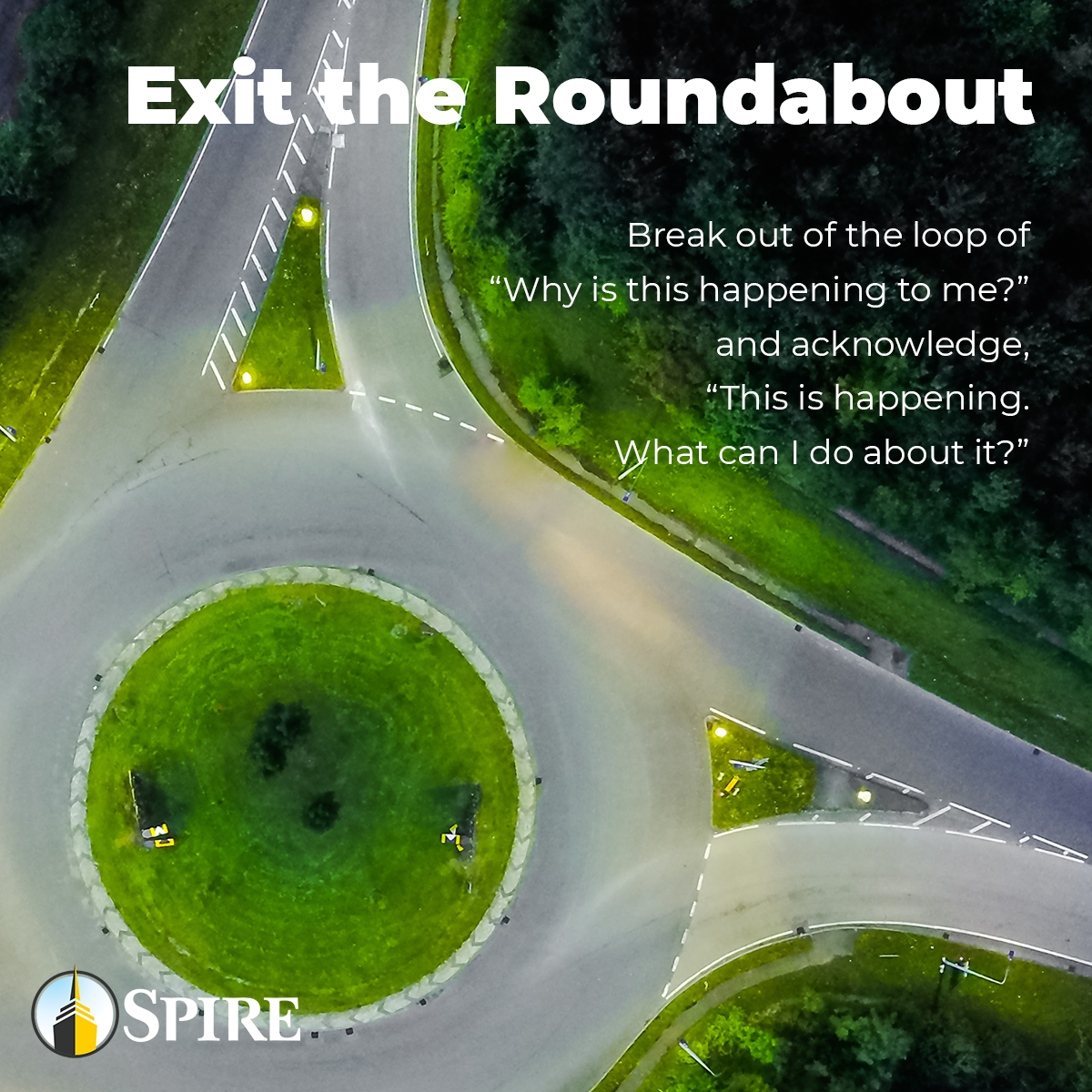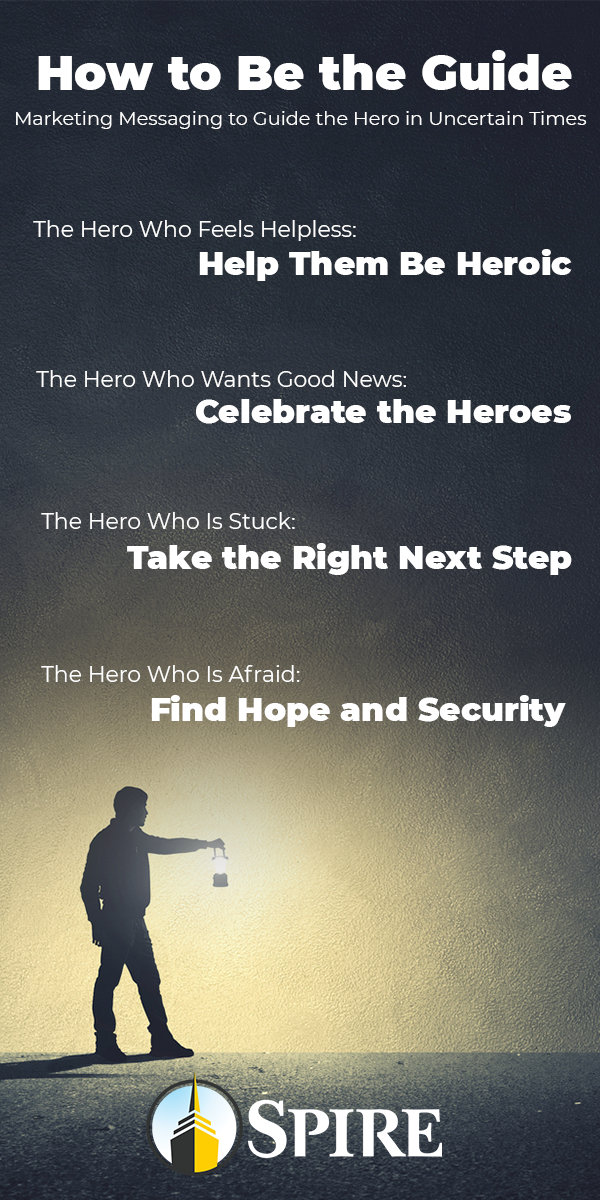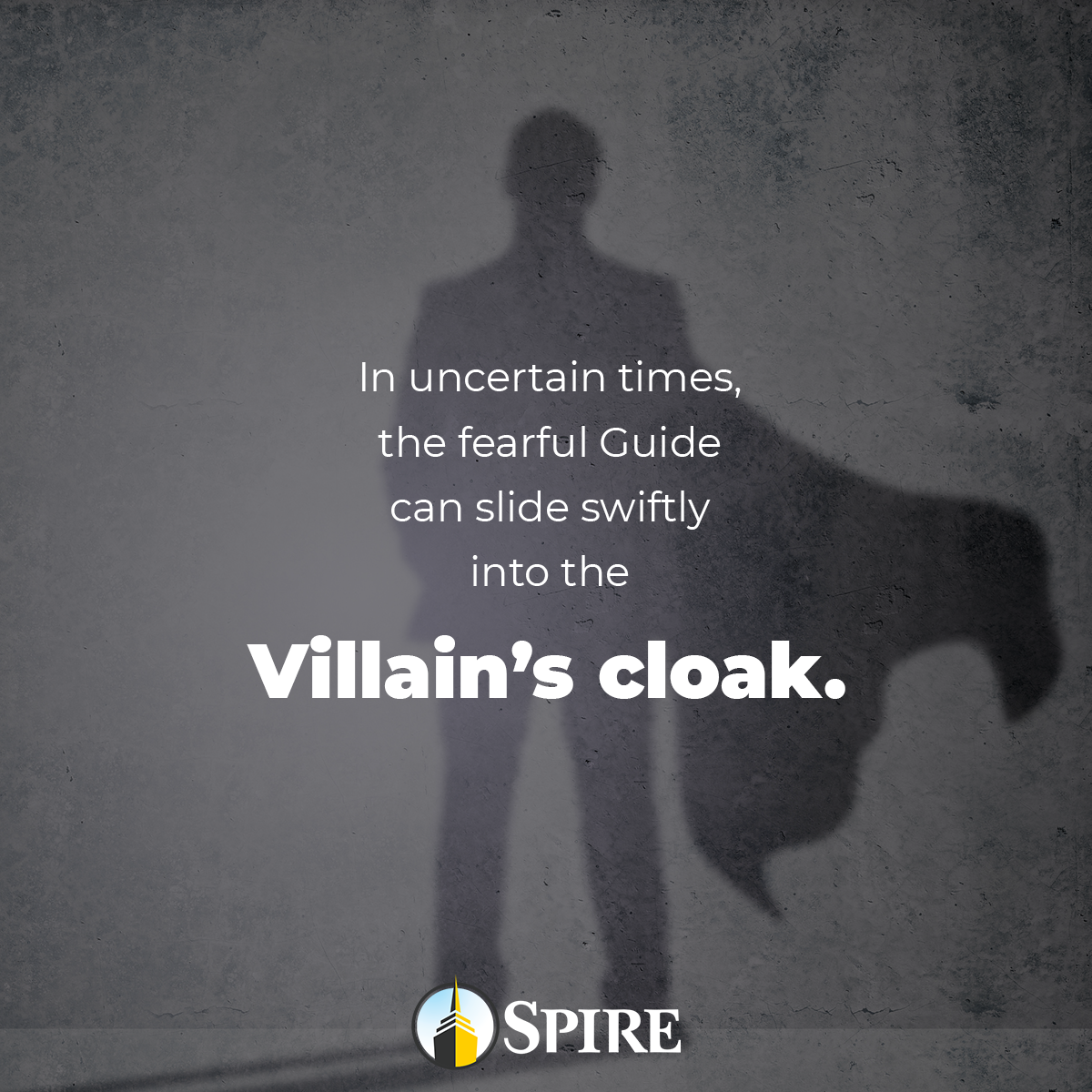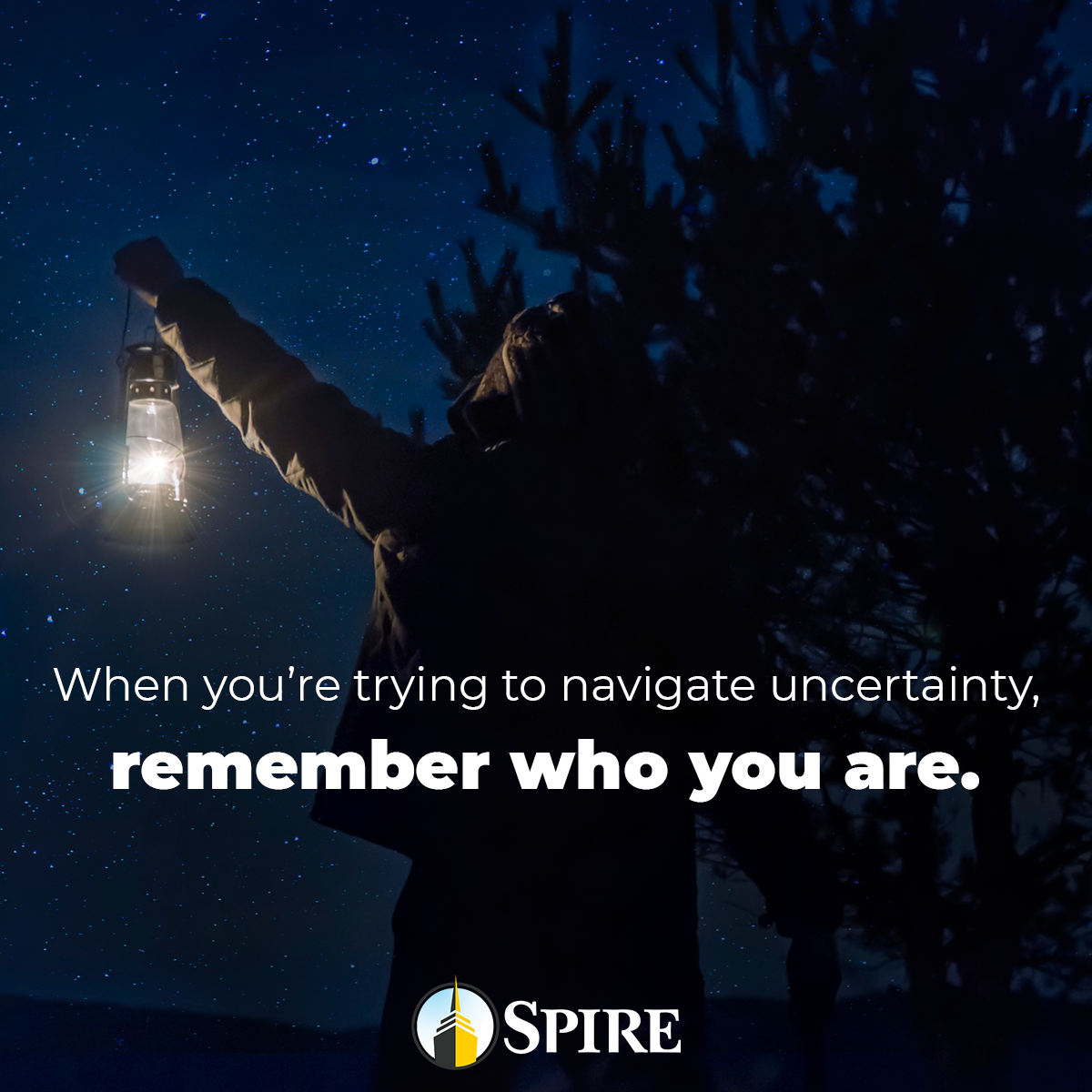The Hero’s Journey in Uncertain Times
Author: Sarah Wells
A Deep Dive into Marketing Messaging
During “normal” times, all marketers are trying to figure out the next best ad hook, tagline, imagery, and content to connect our customers with our brand.
But when the world throws you a curve ball and you’re suddenly thrust into new territory, navigating marketing messaging can be especially sticky. To the extreme, sending the right or wrong message during uncertain times can be the difference between earning brand loyalty and drowning.
So how do you choose what to say and how to say it?
Many marketers have found the Hero’s Journey to be a useful framework for connecting your brand with your ideal customer. The Hero’s Journey is a time-tested formula present in nearly every great story. Adapted from Donald Miller’s Story Brand, Spire uses the Hero’s Journey every single day as we create content for our customers. It’s an especially applicable framework to return to in uncertain times.
What Is the Hero’s Journey?
In a nutshell, the Hero in a story has a problem he can’t overcome on his own. He meets a Guide who has been there before and has the credentials and empathy to help out the Hero. The Guide presents a plan, and it’s up to the Hero to decide what to do next.
Every human being views themselves as the Hero in their story. But when businesses tell the story of themselves, they tend to tell it from the Hero’s perspective, when what your customer really wants and needs during this time is a Guide. Your organization’s marketing will perform better if you position your customer as the Hero and your brand as the Guide.
The traditional Hero’s Journey becomes more complicated when the Hero and the Guide feel trapped under the weight of uncertainty.
Enter the Victim and the Villain.
Hero’s Journey: The Victim
Back in 2020, in the wake of government shutdowns from the coronavirus pandemic, businesses everywhere (including our own) took a few days to hunker down. Imagine the vivid images during a hurricane, folks peering out from behind shuttered windows at the furious world. While hurricane forces gust 100 MPH and higher, everyone else must stand still. It’s likely we all have had moments like this in our lives and businesses, moments of personal and psychological shutdown where all that mattered was survival.
But we can’t stay there.
The Victim in any story is the anonymous other. My family watched The Titanic the other night. While Rose (Hero) and Jack (Guide) do everything in their power to survive the inevitable sinking, it’s all of the extras in the movie that fall victim.
The traditional victim character is usually silent. When they do speak, they take a passive, often negative posture. They tend to avoid responsibility or criticism and instead point fingers in an effort to find someone else to blame. In their perceived helplessness, they seek pity and compassion, putting themselves down in order to attract attention.
Victims get stuck in a loop of “Why is this happening to me?” instead of acknowledging, “This is happening. What can I do about it?”
Don’t Take on the Role of Victim
When fear and the sense we’re losing control start to take their grip, it’s tempting to wrap yourself up in a quilt of victimhood. You want to go silent. You want to huddle up, duck and cover, and wait for the storm to pass. But as leaders, we must resist this temptation.

Why Should You Continue to Communicate during Uncertain Times
Going silent can be just as damaging as communicating poorly during a challenging season. We’ll talk about what it means to become the Villain during uncertain times later. Why is communication vital?
- If you don’t communicate, someone else will. When there’s a gap in communication, someone will come in to fill it either with questions or with the information you could have provided. Own the message. It will help build your credibility as a brand.
- Communication defuses conflict and confusion. Are you open? Are you closed? Have your hours changed? What’s going on? In your silence, these and other questions start to percolate among your customers, employees, and the public. If you lead the charge, you reduce gossip and false messaging, again building credibility that, while this is a difficult time, you’re taking the right next step.
- Communication demonstrates concern. Your customers and employees are experiencing their own reactions to whatever uncertainty is brewing. Silence, whether warranted or not, is interpreted as being out of touch and unfeeling. Communication builds empathy and trust between you and your customer.
- Communication helps you build and/or maintain public support. Everyone knows senior care facilities in general were under strict orders to protect residents during the 2020 pandemic, for example, but your current and prospective customers wanted to know about your specific community and what you were doing to protect loved ones.
Without communication, you can’t be seen as part of the solution. You are just another victim.
Once you’ve taken a deep breath, assessed the situation, and shed your fears of communication, it’s time to figure out what to say and how to say it. In order to do that, you need to understand who your customer is and what they are going through right now.

Hero’s Journey: The Hero
When uncertainty strikes outside of your organization, it doesn’t feel like there’s much an organization can do to quell fears, but you can and should tune in to how people are feeling. To do this, it’s important to view your business through the new lens of uncertainty. Your customer hasn’t changed, but the way they experience the world has changed. When you view your brand through that lens, new specks of opportunity and challenge in your messaging will become clear.
What Your Hero Is Feeling
During most challenging situations, it isn’t hard to put ourselves into the shoes of our Hero, because if the “times” are big enough, they’re affecting us all in some way. Maybe our Hero feels traumatized, afraid, helpless but wanting to help, stuck (both indoors and in the trajectory of their lives), paralyzed, unsure about the future, overwhelmed, foggy, directionless, angry, a sense of grief over immediate and distant losses.
You have to decide how your brand is going to respond to your hero in his or her distress. Craig Modsley, joint chief strategy officer at AMV BBDO, says, “The data tells us people are looking for two things right now: help and comfort. If you’re able to help them to navigate the current situation, tell them about that. But they also want joyful distractions — things to make them smile in times of hardship.”
Hero’s Journey: The Guide
In order to be a Guide people are willing to turn to during any time, you need to build trust with your Hero. Empathy and credibility are the building blocks that provide evidence you are trustworthy.
When times are hard, people will sniff out false hope and syrupy promises. A good Guide adds honesty and vulnerability during a crisis. Like it or not, you’re going to have to tell it like it is and recognize the gravity of this experience. When Voldemort comes back, Dumbledore doesn’t mince words—dark days are coming. Dumbledore is honest with Harry, but he also empathizes with Harry and casts a vision and a plan for how they are going to get through this. He instills hope and optimism. The Guide marries what the Hero feels with a real, distinct next step towards a solution.
We’ve identified a few different strategies you might consider to communicate as the Guide for your customer during this time.
Guiding the Hero
The Hero Who Feels Helpless: The Guide Can Help Them Be Heroic
When people feel helpless, a Guide can show people how they can help. This can be especially effective in employee recruitment efforts and fundraising efforts.
The Hero Wants Good News: Celebrate the Heroes
Fred Rogers is famously quoted for this saying, “When I was a boy and I would see scary things in the news, my mother would say to me, ‘Look for the helpers. You will always find people who are helping.’”
The everyday Hero is on the lookout for good news, any good news. We’re inundated by hard facts, data points, and losses. Your Hero wants to hear about good news, participate in the good news, and celebrate the heroes on the front lines. Hillary Haley, a social psychologist at L.A. agency RPA, says brands can see the most benefit long-term “if they can play the connector role” between worthy causes and anxious consumers.
The Hero Is Stuck: Take the Right Next Step
This messaging is important for the Hero who feels stuck in their problems. Your business can provide the right next step out of whatever circumstances they are in. What kinds of problems does your business solve for the person who just got laid off, or who is bored at home? Whatever circumstances have changed placed boulders on people’s paths—and your job is to find a way to help people take an unexpected detour. Dig into the specific problems your hero might be encountering and figure out how your product or service can help them take the right next step.
The Hero Who Is Afraid: Find Hope and Security
For the Hero who feels hopeless and afraid, how does your product or service provide them with a sense of hope and security that will help them get through this? Every car commercial on TV last spring took this angle—things are tough right now, but we will be together on the other side. Have hope, take comfort, and trust our brand when things brighten up tomorrow.

We’ve got one more character to talk about, and it’s the character we’re all convinced is someone else, certainly not us: The Villain.
Hero’s Journey: The Villain
Consider these characteristics of the best villains in well-known stories:
- The villain is convinced he’s the good guy. The outsider can sniff out his “bad guy” vibes, but the villain believes he’s doing the right thing (it’s usually the right thing for himself, if we’re being honest).
- The villain is charismatic, likable, and persuasive. Think about Gaston in Beauty and the Beast. He’s handsome, charming, and assertive. Everyone is drawn to him. In any other plot, he might even be the hero. But… he’s the villain.
- The villain is clever, sly, and deceitful. Your typical villain is no dummy—he has a plan to pull the wool over someone’s eyes, and (hardly) no one sees it coming.
- The villain is persistent. Maleficent waited around for 16 years to enact her revenge on Aurora. Darth Vader built not one but two Death Stars when the first one was destroyed by the Rebel Alliance. The villain knows what he wants and will overcome any obstacle to achieve their goal.
- The villain takes extreme risks to achieve his goals, sometimes to the point of self-destruction. In Snow White and the Seven Dwarfs, the Queen, whose ultimate aim is to be the fairest in the land, turns herself into an old hag to poison Snow White.
- The villain looks a whole lot like the hero. Admit it, you were duped into believing that Hans of the Southern Isles was the good guy in Frozen.
- Most importantly, the villain is motivated. Every villain has something he’s desperate for—money, fame, power, revenge, beauty, eternal life, love—whatever it is, it’s the driving force that will make him stop at nothing to achieve his goals.

Watch Out for the Villain in Your Marketing
Of course, none of us want to be the Villain in the story, but when faced with a challenge, the fearful Guide can slide swiftly into the Villain’s cloak.
Motivated by fear of closing, fear of losing revenue, fear of losing employees, the Guide-turned-Villain can come up with all kinds of ways to capitalize on the Hero’s problems and turn manipulative and opportunistic, doing whatever he can to seize control, stay in power, and keep winning.
How do you check your intentions and your marketing messaging so you don’t become the villain?
How to Avoid Becoming the Villain
When fear and the sense that we’re losing control start to take their grip, it’s tempting to pull on the villain’s cloak. But we cannot let fear win. Fear contorts what you’ve spent years of your life building. Stay true to yourself, Anakin. Stay true to your core values, who you are as a business, and lead with integrity.
The villain in any story preys on weaknesses. They will do anything they can to uncover vulnerabilities and manipulate the hero into believing what they have to offer is the right thing. The wicked queen in Snow White plays on Snow White’s desire to care for the weak and helpless in order to win, and in the process, she contorts herself into something she isn’t, costing herself everything.
Villain messaging is sly and manipulative and beautiful. It observes the world’s sense of grief and loss and devises ways to play on our strongest negative emotions—fear, control, poverty, anger—to drive us away from that pain.
It’s extremely effective, but it isn’t who you are.
Don’t pull on the cloak of the villain—in an effort to preserve all that you’ve built, all that you’ve built can be swept away.
The Hero’s Journey: Remember Who You Are
Uncertain seasons have a way of stripping away facades to reveal what you’re made of and what matters to you. Your decisions about your business and how you respond say a lot about the character and integrity of your brand. Let your true character shine through; don’t let fear paralyze you and bury the values you and your organization stand on.
When you’re trying to navigate uncertainty about the future, listen to the grandmother (Guide) in Moana, “Listen, do you remember who you are?” Stay true to yourself, Moana. You know the way. Now guide your people forward with the message they need to hear today, into a brighter future.

